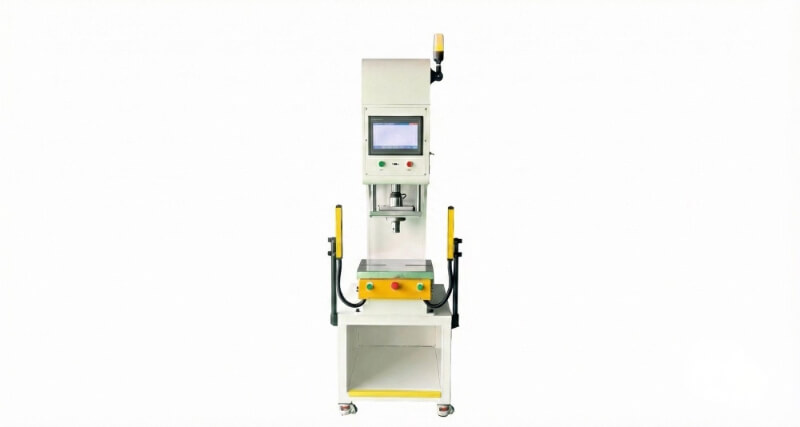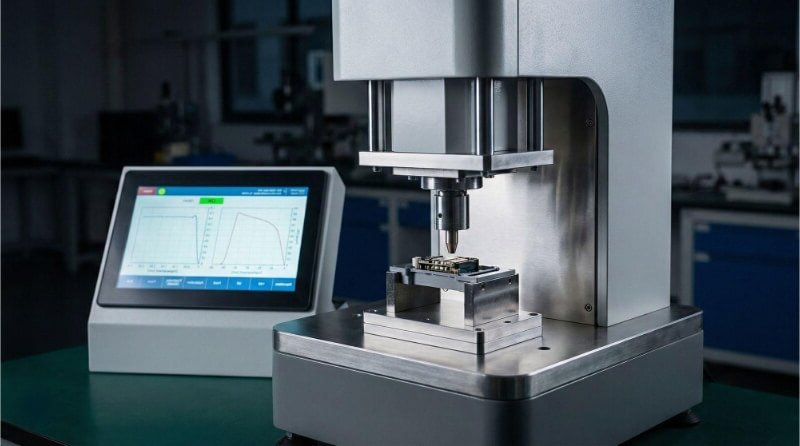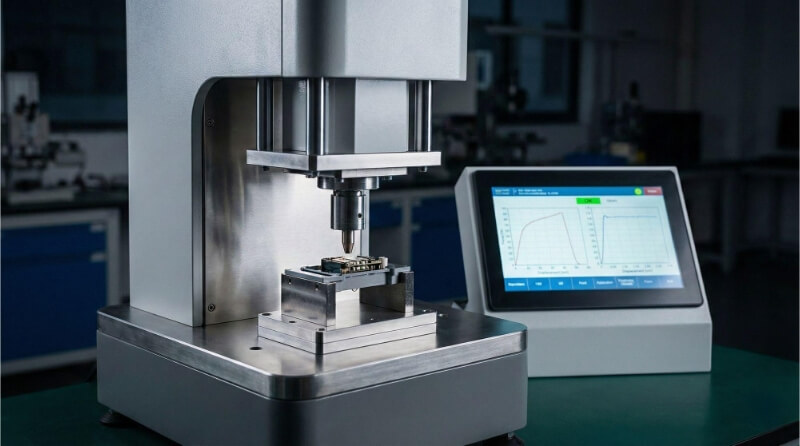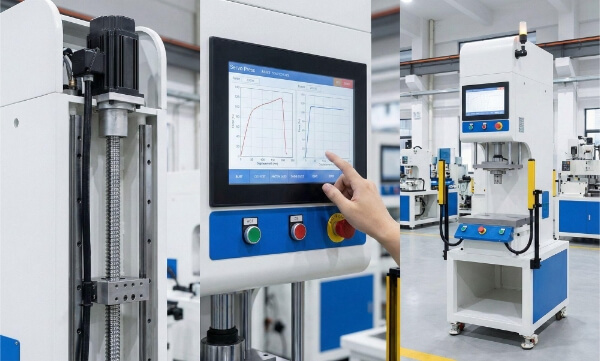يعد اختيار مادة يمكن أن تنحني وتتشكل دون أن تنكسر أمرًا ضروريًا عند العمل مع المعدن. يحتاج العديد من المهندسين والمصممين إلى أجزاء يمكنها التعامل مع الضغط أو التمدد أو الانثناء أثناء الإنتاج والاستخدام اليومي. إذا كنت تفكر في استخدام الألومنيوم، اطرح سؤالاً رئيسيًا واحدًا: هل يمكن للألومنيوم أن ينثني دون أن يتشقق، وهل هو مرن بما يكفي للتشكيل أو الكبس أو السحب؟
يتميز الألومنيوم بمزيج فريد من القوة والمرونة. يمكن أن تتغير ليونة الألومنيوم بناءً على درجته وشكله ومعالجته. دعنا نلقي نظرة على ما يجعل الألومنيوم قابل للسحب وكيفية استخدام هذه الخاصية في مشروعك القادم.
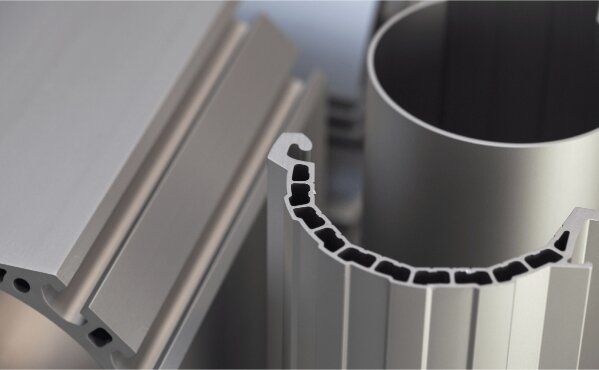
ما هي الليونة؟
توضح الليونة مقدار الإجهاد الذي يمكن أن يتحمله المعدن قبل أن ينكسر. وهي تختلف عن الصلابة أو القوة. فيمكن أن يكون المعدن ليّنًا وقابلًا للسحب. أو يمكن أن يكون قويًا وهشًا ويتكسر تحت الضغط. تتميز المعادن القابلة للسحب ب "استطالة" عالية، مما يعني أنها يمكن أن تتمدد أكثر قبل أن تنكسر.
ليونة تجعل التعامل مع الألومنيوم أسهل في العمل. فهي تسمح بعمليات مثل الثني أو السحب أو الختم أو الدرفلة. تعتمد طرق التشكيل هذه على مدى قدرة المعدن على الحركة دون تمزق.
بالنسبة للمهندسين، تؤثر الليونة على سلوك الجزء في الإنتاج وأثناء الاستخدام. يمكن للمادة القابلة للسحب أن تمتص الإجهاد وتتعامل مع التغيرات في الشكل. كما أنها تقاوم التشقق تحت الضغط أو الاهتزاز المفاجئ.
الخواص الأساسية للألومنيوم
يشتهر الألومنيوم بخفة وزنه وسهولة تشكيله. لكن ما الذي يجعله يتصرف بهذه الطريقة؟ يرجع ذلك إلى بنيته الذرية وكيفية مزج العناصر المختلفة.
تركيب الألومنيوم النقي وهيكله
يتكون الألومنيوم النقي من نوع واحد من الذرات مرتبة في بنية بلورية مكعبة متمركزة الوجه (FCC). هذا التركيب سهل الانزلاق، مما يعني أن طبقات الذرات يمكن أن تتحرك فوق بعضها البعض عند استخدام القوة.
وهذا أحد الأسباب التي تجعل الألومنيوم النقي لينًا ومطاطيًا للغاية. فيمكنه التمدد كثيرًا قبل أن ينكسر، ولكنه لا يتمتع بقوة كبيرة من تلقاء نفسه، مما يحد من استخدامه في التطبيقات الصعبة.
سبائك الألومنيوم المشتركة
يضيف المصنعون عناصر أخرى إلى الألومنيوم لتحسين القوة. وتشمل هذه العناصر النحاس أو المغنيسيوم أو السيليكون أو الزنك أو المنجنيز. هذه العناصر المضافة تجعل الألومنيوم أكثر صلابة وقوة.
هناك مجموعتان رئيسيتان من سبائك الألومنيوم:
- السبائك المشغولة تشكيلها عن طريق الدرفلة أو البثق أو السحب.
- السبائك المصبوبة تُصب في قوالب وتصلب.
لكل سبيكة مزيج من الليونة والقوة. على سبيل المثال، الألومنيوم 1100 مطيل جداً ولكنه لين. 6061 و5052 لا يزالان قابلين للسحب، ولكنهما أقوى وأكثر فائدة في الأجزاء الهيكلية.
قوة الشد مقابل الليونة
قوة الشد هي مقدار قوة الشد التي يمكن أن يتحملها المعدن قبل أن ينكسر، بينما الليونة هي مقدار ما يمكن أن يتمدد أو يتشوه قبل حدوث ذلك.
مع ارتفاع قوة الشد، غالبًا ما تنخفض الليونة. يمكن للسبائك الأقوى أن تتحمل المزيد من الضغط، لكنها عادةً ما تتمدد بدرجة أقل. أما السبائك الأكثر ليونة فقد تتمدد أكثر، ولكن لا يمكنها تحمل نفس القدر من الحمل.
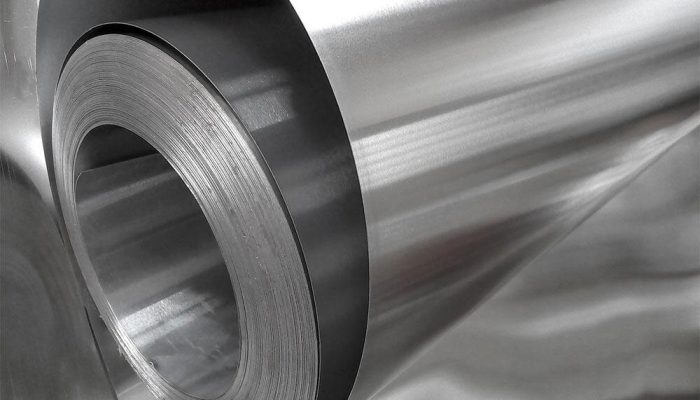
هل الألومنيوم قابل للسحب؟
يُستخدم الألومنيوم على نطاق واسع بسبب قابليته للتشكيل، لكن مدى قدرته على التمدد أو الانحناء يعتمد على نوعه الدقيق. لنقارن بين الألومنيوم النقي وسبائكه.
ليونة الألومنيوم النقي
الألومنيوم النقي مطيل للغاية. ويمكنه التمدد حتى 50% من طوله الأصلي قبل أن ينكسر، مما يجعله مفيدًا جدًا في عمليات السحب العميق والغزل وعمليات التشكيل الأخرى.
فتركيبها الذري يسمح لطبقات الذرات بالانزلاق على بعضها البعض بسهولة. ولهذا السبب ينحني دون أن يتشقق. ومع ذلك، فإن الألومنيوم النقي ناعم، لذلك لا يستخدم في الأجزاء عالية القوة. فهو يتألق في التطبيقات التي يكون فيها الشكل والمرونة أكثر أهمية من قوة التحميل.
تأثير السبائك على الليونة
عند إضافة عناصر أخرى إلى الألومنيوم لتكوين سبائك، عادةً ما تنخفض الليونة ولكن تزداد القوة. تساعد هذه المفاضلة في جعل المعدن مناسبًا للمهام الأكثر تطلبًا.
على سبيل المثال:
- ألومنيوم 6061 يتمتع بقوة جيدة وليونة لا بأس بها. يستخدم على نطاق واسع في الإطارات والأجزاء الميكانيكية.
- ألومنيوم 5052 أكثر ليونة وليونة. فهو ينحني بسهولة ويقاوم التشقق، وهو ممتاز في المرفقات و اللوحات.
- ألومنيوم 7075 قوي ولكن لديه ليونة منخفضة. ويُستخدم في صناعة الطيران، حيث تكون القوة أكثر أهمية من المرونة.
لذا، نعم، الألومنيوم قابل للسحب، خاصةً في شكله النقي. ومع ذلك، يتغير مستوى الليونة اعتمادًا على السبيكة وكيفية معالجتها.
قياس ليونة الألومنيوم
لمعرفة مدى قابلية الألومنيوم للسحب، نحتاج إلى اختباره. يستخدم المهندسون الاختبارات القياسية لمعرفة مدى قدرة المعدن على التمدد قبل أن ينكسر. تعطينا هذه الاختبارات بيانات دقيقة للتصميم واختيار المواد.
شرح اختبار الشد
اختبار الشد هو الطريقة الأكثر شيوعاً لقياس الليونة. يتم سحب عينة معدنية في آلة يتم التحكم فيها. وأثناء تمددها، تسجل الآلة مقدار القوة المطبقة ومدى امتداد العينة قبل أن تنكسر.
قوة الخضوع والاستطالة
قوة الخضوع هي النقطة التي يبدأ عندها المعدن في التمدد دون أن يرتد إلى الخلف. وهي تمثل بداية التشوه البلاستيكي.
تقيس الاستطالة مقدار تمدد المعدن من البداية إلى النهاية. وتعطى عادةً كنسبة مئوية. على سبيل المثال، المعدن الذي يتمدد 25% قبل أن ينكسر يكون له استطالة 25%. الاستطالة الأعلى تعني ليونة أعلى.
تفسير منحنيات الإجهاد والانفعال
تظهر نتائج اختبار الشد على شكل منحنى إجهاد-إجهاد. يساعدنا هذا المنحنى في معرفة سلوك المعدن تحت الحمل.
- يبدأ المنحنى بخط مستقيم - هذه هي المنطقة المرنة.
- عندما ينحني المنحنى، فهذه هي نقطة المردود.
- بعد ذلك، يتمدد المعدن أكثر بقوة أقل حتى ينكسر.
توضح المساحة تحت المنحنى مقدار الطاقة التي يمكن أن يمتصها المعدن. عادةً ما يعني المنحنى الأطول ليونة أفضل.
طرق اختبار الليونة
إلى جانب اختبار الشد، قد يستخدم المهندسون:
- اختبارات الانحناء: يتم ثني المعدن بزاوية محددة للتحقق من عدم وجود تشققات أو كسور.
- اختبارات الحجامة: مثقاب يضغط على صفيحة معدنية لتشكيل قبة، ويختبر مدى امتدادها.
- اختبارات الصلابة والمتانة: وهذه تعطي أدلة حول مدى قابلية المادة للسحب، لكنها لا تحل محل اختبار الشد.
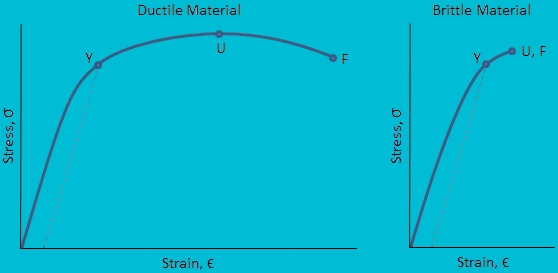
العوامل التي تؤثر على ليونة الألومنيوم
ليونة الألومنيوم ليست ثابتة. يمكن أن تتغير تبعاً لعدة ظروف. تؤثر هذه العوامل على مدى سهولة ثنيه أو تمدده أو تشكيله أثناء المعالجة.
درجة حرارة
تزداد الليونة مع الحرارة. في درجات الحرارة المرتفعة، تتحرك ذرات الألومنيوم بحرية أكبر، مما يسهل تمدد المعدن دون حدوث تشقق.
غالبًا ما يستخدم التشكيل الدافئ لتشكيل أجزاء الألومنيوم. فهو يساعد على تجنب التمزق، خاصة في السبائك الأكثر تعقيدًا. ومن ناحية أخرى، تقلل درجات الحرارة الباردة من ليونة الألومنيوم وتجعل الألومنيوم أكثر عرضة للتشقق تحت الضغط.
تركيبة السبيكة
تؤثر عناصر السبائك المختلفة على الليونة بطرق مختلفة. فبعض العناصر، مثل المغنيسيوم أو السيليكون، تزيد من القوة ولكنها تقلل من قابلية التمدد.
على سبيل المثال، الألومنيوم 1100 (النقي تقريبًا) مطيل للغاية. 6061 لديه ليونة أقل لكن قوته أفضل. 7075 قوي ولكن قابلية تشكيله محدودة.
معدل الإجهاد
معدل الإجهاد هو مدى سرعة تطبيق القوة. إذا قمت بشد الألومنيوم ببطء، فإنه عادة ما يتشوه بسهولة أكبر. إذا قمت بشده بسرعة، فإن المعدن يكون لديه وقت أقل للتكيف وقد يتشقق.
في عمليات التشكيل، غالبًا ما يؤدي معدل الإجهاد البطيء إلى نتائج أفضل. قد يحتاج التشكيل عالي السرعة إلى إعدادات خاصة لتجنب الفشل.
هيكل الحبوب
يؤثر حجم الحبيبات على كيفية تحرك المعدن تحت الضغط. تسمح الحبيبات الدقيقة بحركة أكثر اتساقًا، في حين أن الحبيبات الخشنة يمكن أن تسبب تشوهًا وتشققات غير متساوية.
تساعد طرق المعالجة مثل الدرفلة أو التلدين في التحكم في حجم الحبيبات. يميل الألومنيوم ذو الحبيبات الدقيقة إلى الحصول على ليونة أفضل.
المعالجة الحرارية
يمكن للمعالجة الحرارية تغيير البنية الداخلية للألومنيوم. يعمل التلدين على تليين المعدن وتعزيز الليونة. وتزيد المعالجة الحرارية بالمحلول والتعتيق من القوة ولكنها قد تقلل من قابلية التشكيل.
وتوفر بعض درجات الحرارة مثل O (الملدنة) ليونة عالية. والبعض الآخر، مثل T6 (المعالج بالحرارة والمعتق)، أكثر صلابة وأقل مرونة.
تصلب العمل
عندما يتشوه الألومنيوم، يصبح أكثر صلابة. وهذا ما يسمى تصلب الشغل. وهو يزيد من القوة ولكنه يقلل من الليونة.
يمكن أن يؤدي الإفراط في التشكيل دون التلدين إلى جعل المعدن هشًا. ولهذا السبب تخضع بعض الأجزاء لخطوات تشكيل وتليين متعددة، مما يساعد على الحفاظ على الليونة أثناء الإنتاج.
المميزات والعيوب
تتميز ليونة الألومنيوم بالعديد من الفوائد، ولكن هناك أيضًا مزايا أخرى. تساعدك معرفة كلا الجانبين على اختيار المادة المناسبة لاستخدامك.
مزايا
- سهل التشكيل: ثنيات الألومنيوميسحب ويضغط جيدًا، خاصةً في الأشكال النقية أو اللينة.
- مناسبة للأشكال المعقدة: تتيح مرونته الرسم العميقأو الغزل، أو ختم بدون تكسير.
- وزن خفيف: تحصل على قابلية التشكيل بدون وزن الفولاذ أو المعادن الأخرى.
- ملائمة لإعادة العمل: إذا لم تتم عملية التشكيل كما هو مخطط لها، فغالبًا ما يمكن إعادة تشكيل الألومنيوم المطيل دون حدوث تلف.
- مقاومة التشقق في التشكيل: يقاوم الألومنيوم المطاطي تشقق الحواف أثناء الثني أو التثقيب.
سلبيات
- قوة أقل في شكلها النقي: ليونة عالية غالباً ما تعني قوة منخفضة. لا يستطيع الألومنيوم النقي تحمل الأحمال الثقيلة.
- استخدام محدود في المناطق ذات الضغط العالي: قد تتشوه سبائك الألومنيوم القابلة للسحب تحت الضغط إذا لم يتم اختيارها بشكل صحيح.
- قد تحتاج إلى خطوات إضافية: بالنسبة للأجزاء عالية القوة، قد تحتاج إلى معالجة حرارية أو سبائك الألومنيوم، مما يضيف تكلفة إضافية.
- علامات السطح: يمكن أن تظهر على المواد القابلة للسحب علامات أو تشويه بسهولة أكبر أثناء التشكيل الثقيل.
- مخاطر تصلب العمل: في حالة عدم التلدين، يمكن أن تؤدي الانحناءات المتعددة أو خطوات التشكيل إلى تقليل الليونة بمرور الوقت.
المقارنة مع المعادن الأخرى
غالبًا ما تتم مقارنة الألومنيوم بالمعادن مثل الفولاذ والنحاس عند اختيار مواد التشكيل أو الأجزاء الهيكلية. إليك نظرة سريعة جنبًا إلى جنب للمساعدة في اتخاذ قرارك.
| الملكية | الألومنيوم | فُولاَذ | نحاس |
|---|---|---|---|
| الكثافة (جم/سم مكعب) | 2.7 | 7.8 | 8.9 |
| ليونة | عالي | متوسطة إلى منخفضة | عالي |
| نسبة القوة إلى الوزن | عالي | متوسط | قليل |
| المقاومة للتآكل | جيد (يشكل طبقة الأكسيد بشكل طبيعي) | منخفض (يحتاج إلى طلاء) | جيد |
| قابلية التشكيل | ممتاز | جيد | جيد |
| توصيل حراري | عالي | متوسط | عالية جداً |
| التوصيل الكهربائي | جيد | قليل | ممتاز |
| قابلية التشغيل | سهل التشغيل الآلي والتشكيل | أصعب في الماكينة | ناعم وسهل التشكيل |
التطبيقات التي تكون فيها الليونة حرجة
في العديد من الصناعات، تلعب قدرة الألومنيوم على الانحناء والتمدد دون أن ينكسر دورًا مهمًا في تصميم المنتج وأدائه. وفيما يلي بعض المجالات التي تكون فيها الليونة مهمة.
مكونات الفضاء الجوي
في مجال الطيران، تواجه الأجزاء في الفضاء الجوي إجهادًا عاليًا واهتزازات وتغيرات في درجات الحرارة. تساعد سبائك الألومنيوم ذات الليونة الجيدة على امتصاص الصدمات ومقاومة التشقق. وتستخدم في جلود الأجنحة وألواح جسم الطائرة والإطارات الداخلية. يجب أن تكون هذه الأجزاء خفيفة الوزن ولكن يجب أن تكون قادرة على التشوه قليلاً تحت الحمل دون أن تتعطل.
ألواح هياكل السيارات
تحتاج هياكل السيارات إلى معدن ينحني بسهولة أثناء الختم ولكنه يحافظ على شكله بعد التشكيل. يسمح الألمنيوم القابل للسحب العميق والمنحنيات الحادة في الأبواب وأغطية المحرك والألواح. كما أنه يساعد على تقليل وزن السيارة، مما يحسّن من كفاءة استهلاك الوقود والأداء.
علب الإلكترونيات الاستهلاكية
تستخدم الهواتف والحواسيب المحمولة والأجهزة اللوحية أغطية رقيقة من الألومنيوم للحصول على مظهر نظيف وملمس متين. يتم تشكيل هذه العلب من خلال الختم أو البثق. تضمن ليونة المعدن إمكانية تشكيل المعدن في أشكال دقيقة دون تشقق، حتى في المقاييس الرقيقة جدًا.
خاتمة
الألومنيوم معدن قابل للسحب. فهو ينحني ويتمدد ويتشكل بشكل جيد تحت القوة، خاصةً في أشكاله النقية أو اللينة. وتعتمد ليونته على نوع السبيكة ودرجة الحرارة وطريقة المعالجة. هذه المرونة تجعل الألومنيوم الخيار الأفضل للأجزاء التي تحتاج إلى تشكيل دون تشقق.
هل تحتاج إلى قطع ألومنيوم تتطلب الدقة والمرونة؟ أرسل لنا رسوماتك أو تفاصيل مشروعك - سيساعدك فريقنا في اختيار السبيكة والمعالجة المناسبة لاحتياجاتك.
مهلا، أنا كيفن لي

على مدى السنوات العشر الماضية، كنت منغمسًا في أشكال مختلفة من تصنيع الصفائح المعدنية، وشاركت رؤى رائعة هنا من تجاربي عبر ورش العمل المتنوعة.
ابقى على تواصل

كيفن لي
لدي أكثر من عشر سنوات من الخبرة المهنية في تصنيع الصفائح المعدنية، وتخصصت في القطع بالليزر، والثني، واللحام، وتقنيات معالجة الأسطح. كمدير فني في شنغن، أنا ملتزم بحل تحديات التصنيع المعقدة ودفع الابتكار والجودة في كل مشروع.

